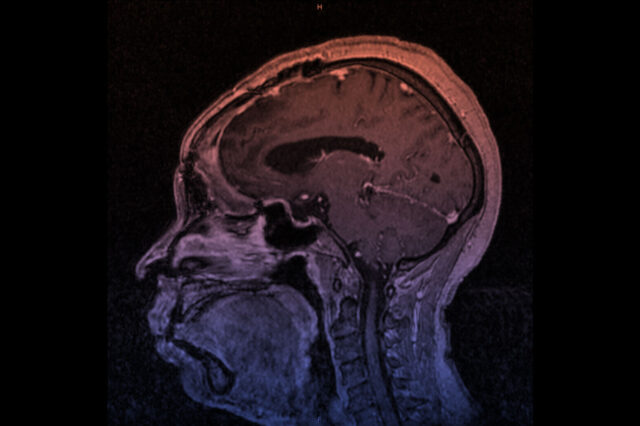Patient education

Many of the people who come to the UF Health Brain Tumor Program in Jacksonville for treatment options have been newly diagnosed with a brain tumor. Brain tumors may be primary or metastatic.
- Primary brain tumors are tumors that originate in the brain, and they are made up of brain tissue. In the U.S., primary brain tumors are diagnosed in about 24,000 adult patients every year, and in about 4,800 children under the age of 20.
- Metastatic tumors are tumors that have occurred because cancer already exists elsewhere in the body, and has spread from another organ to the brain. Metastatic tumors are much more common and are found in about 170,000 patients per year.
Brain tumors may also be either benign (not cancer) or malignant (cancer). Both benign and malignant tumors can cause symptoms and need treatment.
- Benign brain tumors grow and press on nearby areas of the brain but rarely spread into other parts of the brain.
- Malignant brain tumors are likely to grow quickly and spread into other parts of the brain.
Patients are often referred to us by other physicians from throughout the Southeast U.S. — including other neurosurgeons — because they have very complex cases or difficult-to-access tumors.
Brain tumor facts
Anytime someone is faced with a difficult diagnosis like brain cancer, it is important to understand the facts and to dispel the rumors.
- Survival after diagnosis with a primary brain tumor varies significantly by age, histology, molecular markers and tumor behavior
- There are more than 100 histologically distinct types of primary brain and central nervous system tumors.
- About 30% of newly diagnosed brain tumors are malignant
- Average age of diagnosis for primary brain tumors is 59
- As of 2016, brain tumors are the most common cancer occuring in children under 14 years of age
Tumor grading
What is the difference between cancer grades and cancer stages?
Solid organ cancers like lung, breast, prostate and colon cancers are staged. Staging tells us about the degree of spread. But, since primary brain tumors rarely “spread” outside the brain and spinal cord, they are graded. Grading can tell us how aggressive the cancer is.
Grades range from one to four, one being less aggressive, four being most aggressive. Grade one tumors are commonly benign and curable through surgery. However, benign tumors can still be troublesome based on location and operability. Tumors with a grade of three or four are commonly referred to as malignant.
Grading assists in determining the prognosis for the patient and helps us determine treatment options, which might include:
- Surgery alone
- Surgery followed by radiation treatment
- Surgery followed by radiation and chemotherapy
Treatment options
At the UF Health Brain Tumor Program in Jacksonville, you will find one of the most advanced, comprehensive brain tumor treatment programs in the country. When it comes to treatment options, we have many. During your initial appointment, you will meet with a brain tumor specialist who will have a detailed discussion with you about treatment options. He or she will discuss benefits and risks with you and your loved ones. When you decide to go forward with treatment, any necessary procedures are scheduled immediately. Your case may be presented at our weekly tumor board meetings, and several members of the treatment team will review in detail to formulate the most personalized treatment plan for additional therapy.
Treatments may include:
- Surgery
- Immunotherapy
- Chemotherapy
- Radiation or proton therapy